
PERMANENT MEANS:
1. Existing perpetually; everlasting, especially without significant change.
2. Intended to exist or function for a long, indefinite period without regard to unforeseeable conditions.
3. Long-lasting or nonfading.
What is Permanent Life Insurance?
Permanent life insurance is intended to remain in-force for as long as you live may it be to age 100 or beyond rather than for a specific period of time like term life insurance. There are many varieties and they can be structured in various ways depending on your personal situation, cash flow, risk tolerance and what you want to accomplish.

Do you want guaranteed premiums for life or an emphasis on cash value accumulation and retirement income by utilizing the inherent tax advantages of permanent life insurance?
Permanent life can insure one or two lives under the same type of policy. They are referred to as whole life (WL), universal life (UL), guaranteed universal life (GUL), indexed universal life (IUL) and variable universal life (VUL). Survivorship Life covers two lives under one policy and is typically used when the death benefit isn’t needed until the second insured person dies. These policies are also available in the same policy form as above.
Not all permanent life insurance policies are created equal. Some provide stronger lifetime premium guarantees such as whole life insurance (WL) or guaranteed universal life (GUL) while other products like indexed universal life (IUL) or variable universal life (VUL) offer some premium and death benefit guarantees with a projected level premium for life. These products are designed to emphasize cash value accumulation and retirement income using the tax-advantages inherent in permanent life insurance when utilizing withdrawals and loans to access cash later in life.
Yes! Initial premiums are considerably higher for permanent life insurance than you would pay for a term policy with the same face amount. Why? You’re paying more in the early years to offset the mortality risk in later years when term life insurance premiums increase substantially and the policy ends when the premium is not paid. Permanent Life insurance is intended to manage the longevity risk of living to age 100 or longer using different life insurance products.
I believe in contractually guaranteed premiums and the longer they are guaranteed the more valuable the life insurance policy. Surprises are always great at parties, not later in life when the insurance company can change the premium rate on a permanent life insurance policy. YOU WANT TO CONTROL THE PREMIUM, NOT THE INSURANCE COMPANY!

WHOLE LIFE INSURANCE IS A “FINANCIAL CLASSIC” WITH A PROVEN TRACK RECORD OF PERFORMANCE AND EXPERIENCE THAT GOES BACK WELL OVER 100 YEARS.
Through every financial crisis, including the great depression and recessions, whole life guarantees have continued and dividends (not guaranteed) have been paid during difficult economic times. Certainly, an enviable record when compared to other financial products.
In today’s world, this amazing life insurance product has been delivering value to Americans for decades. The guarantees of whole life insurance continue to provide enduring financial safety and security while creating a base that lets you invest elsewhere in other higher yielding financial vehicles.
WHOLE LIFE INSURANCE SIMPLY WORKS BECAUSE OF ITS INHERENT CONTRACTUAL GUARANTEES AND IT WORKS FOR AN ENTIRE LIFETIME. Some things never go out of style, and whole life insurance maintains its own style while providing a level of predictability in an unpredictable and always changing world.
Whole life insurance shifts the risk to the insurance company. They take on the responsibility of providing all of the contractual guarantees on your life and for the life of the policy.
GUARANTEES, GUARANTEES, GUARANTEES!
♦
Guaranteed premiums that will not increase for the life of the policy.
♦
Guaranteed death benefit.
♦
Guaranteed cash value that accumulates on a tax-deferred basis.
THE BEAUTY OF GUARANTEES / A BUFFER AGAINST RISK
What other products or services are guaranteed to never increase in price and increase in value over time? There is a sense of comfort that guarantees provide over an entire lifetime.
No one has control over the future. That’s how and why guarantees can help, and what better life insurance product to use than whole life insurance?
A guarantee is a guarantee – everything else is a variable or assumption and subject to change.
What other product can fulfill promises like this with guarantees? Whole life insurance – no matter what curves or changes life throws your way in the future.
Whole life lets you see the future with guarantees, and a WINNING BET is a life insurance premium that is guaranteed for a lifetime.

The leverage of whole life insurance is such a blatantly obvious solution that many people fail to grasp that it may very well be the sexiest, low-cost (over a lifetime), low-risk financial vehicle around with valuable tax advantages.
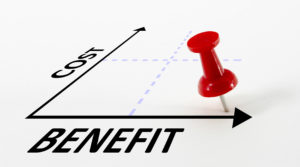
THE ADVANTAGES AND DISADVANTAGES OF WHOLE LIFE INSURANCE
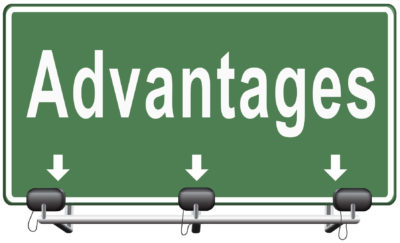
♦
Guaranteed to provide life insurance no matter how long you live. Yes, you pay for the guarantees, but they are well worth it. **
♦
Guaranteed premiums for a lifetime. This means NO rate or premium increases and NO separate management or policy fees. **
♦
Guaranteed premium payment options allowing for a guaranteed paid-up life insurance policy over 10 years, 20 years, or to age 65. **
♦
Guaranteed death benefit for a lifetime and paid tax-free. **
♦
Guaranteed cash values for a lifetime. **
Cash values become a very nice and attractive savings account later in life should you need money for any purpose e.g., financial emergencies, unexpected opportunities, college planning, and even to create a stream of income to help supplement retirement income. Cash values in whole life insurance over time will increase on an annual basis, eliminating the volatility of returns found in other types of assets. When the stock market decreases your guaranteed cash values will be increasing at no risk. The cash values grow tax-deferred and can be accessed through policy loans on a tax-preferred basis. Cash values in a whole insurance policy are made up of guaranteed values and dividends, which are not guaranteed. See dividends below.
FOOTNOTES:
** Guaranteed policy features of a whole life insurance contract are subject to the financial strength and claims-paying ability of the insurance company. They are not guaranteed by any federal government agency, bank or credit union.
*** Policy loans and withdrawals must be managed properly before accessing cash values. This can be accomplished with in-force and ongoing illustrations provided by the insurance company. Outstanding loans (not repaid) are considered collateral against the death benefit. They are forgiven and extinguished when a death benefit is paid out to a designated beneficiary.
You can surrender your policy for the cash value and are subject to current income taxation if there is a gain in the policy. A gain means the cash value at surrender is greater than the premiums paid into the policy.
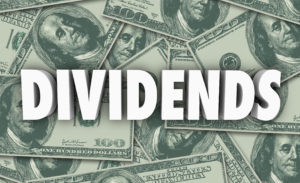
Whole life insurance pays DIVIDENDS, which are not guaranteed and subject to change. DIVIDENDS INCREASE CASH VALUES, INCREASE DEATH BENEFITS, CAN BE USED TO OFFSET OR REDUCE PREMIUMS AGAINST LIFETIME PREMIUM PAYMENT SCENARIOS. DIVIDENDS CAN EVEN BE RECEIVED IN CASH.
Dividends can vary from year-to-year and are determined by the insurance company based on:
Investment results.
Mortality experience.
Operating expenses of the company.
Dividends are calculated and determined every year. DIVIDENDS ARE SUBJECT TO CHANGE AND NOT GUARANTEED.
The largest mutual life insurance companies like to promote when announcing their annual dividend. They have been paying them for over 150 years even though dividends are not guaranteed.
NOTE – A participating whole life insurance policy, which pays dividends and issued by a Mutual Company is managed long-term for the benefit of the insured / owner (policyholder). What’s the difference between a mutual and stock insurance company? A Stock Insurance Company is more concerned about their shareholders rather than policyholders and the “ROI” return on investment profitability from a line of insurance they offer.
ADDITIONAL BENEFITS WHOLE LIFE INSURANCE PROVIDES:
♦
A waiver of premium continues to pay your premiums should the insured become totally disabled. This is a self-completion benefit.
♦
Long-term care and other newer types of benefits such as chronic illness and critical illness are now available on many whole life insurance policies with more being considered and likely approved in the future.
♦
An accelerated benefit for a terminal illness is usually included in the policy.
♦
Once cash values have accumulated over a period of time, should you run into financial problems, the premium can be paid out of cash values. This should not be considered a long-term strategy, but more of an emergency option with the premium loan being repaid as soon as possible.
♦
Whole life insurance includes a variety of miscellaneous non-forfeiture options including cash surrender, a reduced paid-up policy or extended term life insurance.

♦
Costs much more than term life insurance and usually more expensive than other types of permanent life insurance policies.
♦
Doesn’t offer premium flexibility.
♦
A policy surrendered in the early years provides very little in return for your premiums. A whole life insurance policy should not be considered if you can’t commit to the ongoing premium amount. This is why from my point-of-view it’s very important to make the premium and face amount affordable.
♦
Takes 10 to 20 years to start building decent cash values, which requires a long-term vision. The cash values of whole life insurance aren’t a get rich quick proposition. You must thoroughly understand why you committed to the guarantees in this type of life insurance to be rewarded in your future. Cash values in a whole life insurance policy are nice tax-deferred savings account with a favorable IRR internal rate of return when compared to other savings vehicles. I don’t consider whole life cash values equivalent to outside investments even though this comparison is often made.
Are Whole Life Insurance Premiums Worth The Cost
When You Can Pay Less with Term Life Insurance?
Financial gurus in popular media and all over the internet emphasize when you are young term life insurance is the only way to go! Young people become conditioned to believe life insurance is only needed for half of life and miss out on the guarantees whole life insurance provides not only early in life but later in life. Everything in life has a price. Is purchasing a home worth the financial sacrifice rather than renting the same home? Is whole life worth the cost when the policy becomes more economical and provides greater leverage in your future once term life insurance has ended? What was the cost of a 1 million 20-year term life insurance policy after the rate increase and the policy ends? Was it the 20 years of premiums paid or a $1,000,000 dollar mistake?

The Rabbit = Term Life and starts out with a lower premium.
The Rabbit stops running at the end of the term rate guarantee when premiums increase substantially. The death benefit ends and the rabbit gets nothing in return for the premiums paid into the term policy.
The Turtle = Whole Life and starts out with a higher premium.
The Turtle takes off slow and methodical. When the rabbit stops running the turtle continues on with all the inherent guarantees whole life insurance provides the insured / owner.
UNIVERSAL LIFE IN THE 1980’s STARTED THE WAVE OF FUTURE ALTERNATIVE TYPES OF PERMANENT LIFE INSURANCE PRODUCTS

Universal life insurance was an unbundled product developed back in the 1980’s when there was only plain vanilla whole life insurance with its fixed guaranteed premiums and reliable yet conservative cash value growth. Interest rates were at an all-time high hovering around 15%.
The unbundled flexible nature of universal life allowed you to view the separation between your premium, monthly insurance, administration costs and cash values earning a current interest rate.
Why pay for the guarantees of whole life insurance when you could pay less for the same face amount and have more cash value in your future at projected higher interest rates?
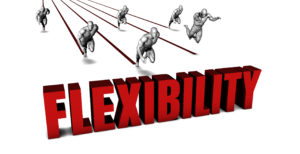
THIS POLICY HAD FLEXIBILITY WRITTEN ALL OVER IT
Driving the universal life insurance sale were lower premiums than whole life insurance with all of its inherent contractual guarantees. Instead of guaranteed level premiums for traditional whole life insurance, many liked the idea of flexible premiums allowing the insured / owner to pay either the ongoing scheduled premium, reduce or even skip premiums with higher interest rates taking care of all the policy costs. It all seemed great in theory.
This product was widely marketed as the next generation of permanent insurance, with options for greater premium affordability as well as cash value gains. Universal life was more “flexible” than whole life insurance with flexible premiums, flexible death benefits (increase or reduce the face amount), and much sexier interest rates crediting cash values around 10 to 12% rather than the traditionally-managed whole life cash values. Nothing was guaranteed except the 4% minimum interest rate, which would never occur and seemed unthinkable. Looking backward who could see the future!
There was another apparent advantage on the surface of these policies. The cost of insurance (COI) started lower than in a whole life policy and increased over time, appearing more affordable, at least at the onset with higher interest rates. Essentially, the life insurance component of a universal life policy was annual increasing term costs, bringing the same advantages – and disadvantages – of renewable term insurance into the policy. It goes up each year.
What impact would increasing yearly mortality costs and lower interest rates have on the performance of a universal life insurance policy going forward. It projected to work at 10%, but how would it work at a 4% guaranteed interest rate?
The shiny potential of lower premiums and higher policy cash values – easily earned when interest rates soared in the 80’s – made for attractive policy illustrations. When the shiny potential of higher cash value returns started to dim and interest rates began to fall and fall again to the 4% guaranteed credited interest rates, universal life policy performance fell short of originally illustrated projections.
What would happen to the policy if you started tapping your cash values with declining interest rates? How would universal life work and what would be the impact on your premiums in the future if interest rates continued to decline? Would they remain the same or would you have to increase them to prevent the policy from lapsing due to declining interest rates?
These illustrations were also very poorly written back then. Certain scenarios were not presented or properly disclosed. The insurance companies were later hammered with class action lawsuits dealing with misrepresentation and bad faith.
WHAT TO DO IF YOU HAVE AN OLDER CURRENT UNIVERSAL LIFE INSURANCE POLICY?
Every current assumption universal life insurance policy written in the ’80s or ’90s has underperformed. It is important to request in-force illustrations from the insurance company to see the following.
How’s the policy performing based on your current scheduled premium? This will show you how long the policy remains in-force.
Solve to carry the policy to age 90, 100 or beyond.
Consider reducing the face amount of the policy if it can be done and makes sense.
THE ADVANTAGES AND DISADVANTAGES OF UNIVERSAL LIFE INSURANCE

♦
Allows you the premium flexibility to increase, decrease or possibly skip premiums. You can’t skip premiums with term life insurance.
♦
Offers face amount flexibility. You can increase the face amount subject to insurability or decrease the face amount subject only to a policy request form.
♦
Pays current interest rates to your policy cash values.
♦
Offers you the right to borrow or withdraw money from your policy during your lifetime.
♦
Long-term care and other newer types of benefits such as chronic illness and critical illness are now available on many universal life insurance policies with more being considered and likely approved in the future.

♦
Older universal life insurance policies offered very little in the way of guaranteed premiums and guaranteed death benefits (no lapse). Current universal life insurance policies offer guaranteed no-lapse premiums, but make sure you understand for how long.
♦
The hazards of universal life are the difficulty predicting with certainty how much cash value you will have at any given point in time. Although the insurance company’s fees / costs are due at regular intervals, future policy performance is based on the amount of cash value you have in the policy.
♦
This type of policy with its current low-interest rates is not very attractive right now.
♦
Universal life based on current assumptions is calculated using monthly (COI) cost of insurance charges and current interest rates, which are both subject to change and do not benefit you in the future if the insurance company alters them in a policy. These changes, especially in the (COI) can result in significant premium increases or possibly cause a policy to lapse in the future.
♦
Anything that isn’t guaranteed is just a projection and subject to change going forward in the future.
UNIVERSAL LIFE CONTINUED TO EVOLVE WITH PRODUCTS THAT HAVE BEEN INTRODUCED INTO THE MARKETPLACE OVER THE YEARS. There are very smart people who work on behalf of insurance companies in actuarial and marketing departments who have continued on with the unbundled universal life insurance policy concept and applied it to other life insurance products.
(VUL) Variable Universal Life
Variable universal life introduced around 1990 was the next universal life insurance product following the flexible premium unbundled approach to life insurance. A separate Series 6 license was required to sell these policies.
Traditional universal life was still popular with current high credited interest rates to policy cash values. What if cash value gains could be attributed to market-based investments? The thinking being if the stock market can go up why not policy cash values wrapped in a universal life insurance policy with all of the tax-advantages (tax-deferred growth and preferred tax treatment on withdrawals and policy loans). I recall proposals allowing up to a 12% gross rate of return. What would happen if your gross rate of return underperformed and only averaged 6% or less for a number of years? How do you think the policy would perform then?
Plus 50 or more different sub-investment accounts to match any investment risk preference with plenty of disclosures and a prospectus of legal and financial fine print.
ADVANTAGES AND DISADVANTAGES OF VARIABLE UNIVERSAL LIFE INSURANCE

These types of policies have all of the same features of traditional universal life with higher cash values if the underlying separate investment accounts performed well.
♦
Premium flexibility to increase, decrease or possibly skip premiums.
♦
Face amount flexibility. Depends on policy design and what you want to accomplish with the policy. Level face amount or increasing (level face amount + cash value increase) for overfunding the policy and cash accumulation. You can decrease the face amount subject to a policy request form.
♦
You can change the separate investment accounts annually up to a designated number allowed by the insurance company. Usually around 10 to 12 changes per year without a charge.
♦
You have the right to borrow or withdraw money from your policy during your lifetime.

Disadvantages are the same as universal life but can be even greater due to the unpredictability of investment returns and how much cash value you will have at any given point in time. Although the insurance company’s fees / costs are due at regular intervals, the future policy performance is based on the amount of cash value you have in the policy.
There are many internal costs and various fees attached to the policy and investment accounts.
♦
What is guaranteed in the policy? How long are the no-lapse premiums guaranteed for in the policy? Remember anything that isn’t guaranteed is just a projection and subject to change going forward in the future.
♦
Changes in the (COI) cost of insurance can result in significant premium increases or possibly cause a policy to lapse in the future.
♦
What impact will policy withdrawals or cash value loans have on your premium or the no-lapse premium guarantee?
♦
This type of policy requires sophisticated investment knowledge to understand and manage all of the moving parts.
♦
Variable universal life is great for the insurance company. You assume all the risk of policy performance.
More insights in “Understanding The Levers, Trap Doors And Other Moving Parts Of Permanent Life Insurance”.
(GUL) Guaranteed Universal Life
NO-LAPSE GUARANTEE UNIVERSAL LIFE
Around the late 1990’s / early 2000’s, interest rates were gradually declining and 20 to 30-year level term life insurance was on the rise. These smart people at the insurance company figured if there was so much appeal for level term with no cash values, could they design a universal life insurance policy with guaranteed level premiums / death benefit and no cash values? Yes, and universal life insurance with no-lapse guaranteed premiums was introduced into the marketplace.
You might think of it as permanent TERM life insurance with a guaranteed premium and death benefit protection to a specific age, age 100 or beyond. As long as you pay your premiums when due, the premium, and face amount of the policy are guaranteed.
ADVANTAGES AND DISADVANTAGES OF GUARANTEED UNIVERSAL LIFE

When the guaranteed death benefit is KEY in relation to the premiums paid and cash values are not important.
♦
Consider it a “MIRROR” of level term life insurance just for a longer period of time with guaranteed premiums and death benefit to age 90, 100 and beyond.
♦
The policy can be structured with premiums guaranteed for a number of years i.e., 10 or 20 years with a paid-up policy.
♦
The company may allow a catch-up provision at a much higher premium to carry the policy longer into the future than you originally purchased.
♦
The face amount can usually be reduced should the initial policy design have been for a specific number of years and there is a need to continue the life insurance at a lower face amount / lower premium.
♦
Long-term care and other newer types of benefits such as chronic illness and critical illness are now available on many guaranteed universal life insurance policies with more being considered and likely approved in the future.
♦
Excellent for ownership when placed in an (ILIT) irrevocable life insurance trust, and with this strategy removing it from your estate and eliminating the policy from being subject to estate taxes.
Always request in-force illustrations just to make sure the policy guarantees are the same as when you purchased the policy.

THE TIMING OF PREMIUM PAYMENTS IS CRUCIAL WITH NO-LAPSE GUARANTEED UNIVERSAL LIFE. These policies are sensitive to the timing of when premiums are received. The no-lapse death benefit guarantee can change if your premium is not paid when due, is late or skipped, which you never want to happen with this type of policy.
Make sure you understand how long you have for the premiums to be received without altering the death benefit guarantees.
Do you trust the efficiency of the United States Post Office to deliver mail on time? What happens if a premium payment is lost in the mail or you don’t receive the premium notice on time causing your premium payment to be late, missed or skipped. Depending on the company, there can be serious consequences to the no-lapse guarantee premium / death benefit features of the policy. They can be shortened, reduced significantly or in a worst case scenario the policy lapses.
I prefer to set these policies up by monthly bank withdrawal to eliminate any chance the premium will not be received in a timely manner. Annual premiums are the next ideal premium paying method. Remember if you’re considering changing your checking account to notify me or the insurance company as soon as possible and allow at least a month in advance so the insurance company can process checking account changes in a timely manner and on the same scheduled due date.
♦
A big negative. There are no cash values if you no longer need the death benefit meaning you get nothing in return for premiums paid should you ever stop paying premiums on the policy. Then again like level term life insurance, you get nothing in return for your term premiums either. Except you’ve paid higher premiums for guaranteed universal life.
♦
Should a policy provide any minimal cash values and you borrow them. You will likely destroy the death benefit guarantee of the policy. I recommend never touching any of the policy cash values. The policy was not designed for this purpose or benefit. Consider getting in-force illustrations before ever considering touching any cash values in a policy like this.
♦
IMPORTANT! You must be able to continue making the premium payment later on in life should your financial situation change. Would-be purchasers of these guaranteed policies need to ask themselves how certain they are about their financial affairs going forward. Will they remain structured and organized in such a way for the remainder of their lives that no matter their age, change in health, or circumstances in the future, the premiums need to be paid as required to maintain the policy guarantees? Those who are late with the occasional utility bill or who cannot be sure that every bill will be paid in a timely manner need to recognize the risk that inattention to these premiums could cause the loss of the death benefit guarantee and all the premiums previously paid into the policy.
These products have either been withdrawn by many companies or have significantly increased in cost due to a decline in interest rates over the past 20 years requiring the companies to set aside more in reserves to maintain policy guarantees while profit margins have been reduced.
(IUL) Indexed Universal Life
Before the inception of Indexed Universal Life, insurance companies were using the idea of index crediting within annuity products. Once again those smart people at the insurance company figured if we could create an indexed product for annuities why not life insurance?
Indexed universal life has been the latest to follow in the line of universal life insurance products. It was first introduced in the late 1990s and has experienced rapid sales growth due to its relatively straightforward marketing message regarding cash values. Earn interest on stock market index gains with no downside risk or guaranteed downside protection with upside potential. This is still the hype and buzz regarding this product.
However, the oversimplification of what is, in actuality, a very complex product, spanning a long period of time has sparked growing concerns among regulators and insurance professionals including myself as to the product’s potential to mislead due to the many moving parts and trapped doors while creating illustrated and unrealistic cash value projections and misleading policy distributions.
While the marketing story certainly sounds compelling on the surface, critics warn that market returns are not guaranteed and the yearly increasing term nature of the insurance could make it expensive to maintain the policy later in life when premiums can rise sharply especially if unpredictable variables, beyond your control, occur within the policy.
Policy cash values underperformed the original illustration or in-force illustrations.
Premium payments are different because of your changing circumstances (paying premiums below the scheduled premium or skipping premiums altogether).
Moving parts in the policy change that benefited the insurance company and not you.
HOW IT WORKS
Remember this is a permanent life insurance solution first with a need to provide a death benefit and because it’s universal life insurance, follows the same general details allowing the insured / owner complete flexibility regarding the premium and timing when payments are made or decreasing the face amount if desired.
Your premiums go toward the life insurance costs and fees with the remainder applied toward the cash value of the policy. THE MAJOR DIFFERENCE CASH VALUES ARE CREDITED (INTEREST) BASED ON INCREASES IN A STOCK INDEX RATHER THAN A GENERAL INTEREST RATE.
A common misconception of indexed universal life insurance is that policyholders have exposure to the stock market because of the indexing feature and therefore face market risks. You’re not directly invested in the stock market. The indexing feature is merely an alternative method of determining the interest rate at which money will be credited to cash values in the policy.
How much interest is credited to your policy’s cash value will depend on the positive movement of an index or multiple indexes chosen by the insured / owner.
The indexed account tracks a specific period of time chosen by the insured / owner. This time period can be over the course of one month, a year, several years, etc. The most common option is one year.

What’s a stock index? It is a way to measure the value of the stock market by computing the prices of selected stocks. A commonly used one is the Standard and Poor’s 500 stock index, which is the value of 500 stocks tracked every day on the financial markets. The index that is followed can vary from company to company or even product to product, but as stated above the most popular option is usually the S&P 500.
The indexing feature itself generally has a CAP on the interest rate. For example, if the CAP on the indexing account for the S&P 500 is 12% in a given year, any rise in the S&P beyond 12% will not earn interest above this CAP — 12% interest will be applied to your policy cash values.
The indexing feature also has a PARTICIPATION RATE that determines how much of the rise in the index will actually go towards the interest rate. For most products, the PARTICIPATION RATE is 100%, meaning the interest rate will be whatever the positive movement in the index is up to the cap. Note there are many variations on CAPS and PARTICIPATION RATES depending on the company, product selected and what you want the policy to accomplish for you.
ADVANTAGES AND DISADVANTAGES OF INDEXED UNIVERSAL LIFE

♦
Tax-Free Death Benefit – Remember this is life insurance first even its primary purpose is to accumulate cash. The death benefit is paid income tax-free to your designated beneficiary.
♦
Tax-Deferred Cash Value Growth – The cash value component of an indexed universal life insurance policy is allowed to grow on a tax-deferred basis.
♦
Upside cash value potential – Indexed universal life may provide above averages returns when the selected index does well in a given year.
♦
Various Stock Market Indexes to select from depending on the company, product, and what you want to accomplish from the policy.
♦
Loans do not have to be repaid. Loans reduce the face amount and are extinguished at the death of the insured when benefits are paid out. However, if a policy is surrendered or lapses any outstanding loan in a gain position is subject to income taxes for that given year.
♦
Policy cash value can be accessed with favorable tax treatment – Loans and withdrawals are generally free of income taxes.
♦
Guaranteed Interest Rate – The company provides a guaranteed interest if the stock market declines in value in a given year or years. Let’s assume the cash value is guaranteed not to go below 1% for a given year, even if the underlying index has a year when it returns a negative 14%, the policyholder will still receive 1% for that period of time.
♦
These policies may work best when designed in overfunding situations subject to policy premium and face amount maximums to prevent them from becoming a MEC (Modified Endowment Contracts), which changes the favorable tax status.
♦
No premium limitations – Other than making sure the policy is not a modified endowment contract (MEC).
♦
Locked in policy gains – IUL provides downside protection by locking in your gains if the index drops below a certain point in a given year or years. So your account values don’t decrease in a down year or years because the insurance company resets the index on an annual basis called the “annual reset”. All interest credited during the prior year is locked in and will not be taken away due to negative index performance.
♦
No (RMD’S) required minimum distributions like other retirement plans. No required minimum distribution at 70 ½.
♦
Long-term care and other newer types of benefits such as chronic illness and critical illness are now available on many indexed universal life insurance policies with more being considered and likely approved in the future.
KEY POINT: IUL IT IS NOT INTENDED TO BEAT OR OUTPERFORM THE STOCK MARKET. REMEMBER YOU HAVE A FLOOR OF 0% WHEN THE MARKET IS DOWN, THE TRADE OFF IS THAT YOU WONT GET THE FULL UPSIDE OF THE MARKET.
This product can attempt to minimize exposure while complementing any portfolio against investment risk and market volatility assuming there is a need for life insurance.
It has the potential to deliver competitive growth from positive movement in a stock market index. Whether that movement continues in a bull market or a recovering market following a correction, positive gains tracked by the indexed account may add growth to the insured / owner’s cash values.

♦
ILLUSTRATIONS — Illustrations for Indexed Universal Life insurance can be skewed when projecting a given average annual rate of return of 7%, 9% or higher and then predicting that you’ll get that same return every year—for the life of the policy! How likely do you think the market indexes will increase by the exact same percentage every single year, for 30, 40, 50 years or more?
These long-term premium payment scenarios illustrating substantial cash value accumulations coupled with large distributions of retirement income through withdrawals and loans create inaccurate expectations into the future with a low statistical probability of occurring.
♦
UNREALISTIC EARNINGS ASSUMPTIONS — The hazard of IUL is the difficulty that you cannot predict with certainty how much cash value you will have at any given point in time. Although the insurance company’s fees / costs are due at regular intervals, the future policy performance is based on the amount of cash value you have in the policy.
♦
POLICY COSTS — Every life insurance product has costs associated with it and indexed universal life is no exception. IUL provides numerous ways for the insurance company to create profits and recoup costs especially if changes have to be made due to poor portfolio returns, investment losses or higher than anticipated death claims all with the intention to subsidize their balance sheets and bottom line profitability.
Most IUL contracts have higher costs associated with them due to the considerable expense required to develop a strategic portfolio of derivatives and often place higher charges into IUL contracts than they do with other traditional UL products.
Don’t assume policy costs will remain unchanged throughout the life of the contract. The point is the insurance company has the broad contractual rights to do what’s in their best interest. Not that they will make unfavorable changes, but they can unless something is specifically guaranteed in the policy. Any change that benefits them will most likely not benefit you. This can create real potential problems with ongoing premiums increasing and impact policy performance years into the future.
Learn more in “Understanding The Levers, Trap Doors And Other Moving Parts Of Permanent Life Insurance”.
♦
YOU CAN NEVER LOSE A CENT — Regardless if a minimum guaranteed interest rate is credited or the index loses money over the previous year and zero is locked in, should the annual policy costs be greater than the premium received or if no premium is paid, the cash values will decrease and the policy can generate a loss in a given year. The policy may never actually experience a loss but can lose big because of its expenses especially later in life.
♦
COMPLEXITY — Complexity does not favor the insured / owner. The more complex the policy, the less likely you will remember how it will work or was supposed to work in the future when tapping your cash values.
♦
THE FINE PRINT — WHAT’S GUARANTEED? — Do you understand the fine print? How long is the no-lapse premium or death benefit guaranteed for in the policy? What impact will cash withdrawals or loans have on any guaranteed premiums? Are illustrated non-guaranteed cash values being relied upon to support a projected level premium for a period of time or a lifetime? These are very important questions that need to be understood.
♦
YOU ASSUME ALL OF THE RISK — IUL is great for the insurance company. You assume all the risk of policy performance.
♦
TRACK RECORD — I’m not sure 20 years is a proven track record. Statements claiming these policies have been “back-tested”. Backtesting assumes that what happened in the past will happen again in the future, and this assumption can be misleading. You’ll frequently read past performance does not necessarily guarantee future performance or results.

Who do I think indexed universal life is best suited for?
STASHING CASH!
Indexed UL should be considered by someone who is financially sophisticated and understands the policy’s pros and cons with a need for permanent life insurance financial protection.
Given the advantages and disadvantages previously discussed, it can be a viable alternative planning vehicle for some individuals and only recommended with caution, adequate disclosures and a thorough examination of alternative earnings scenarios.
I believe its biggest appeal and is best utilized for (1) cash accumulation or (2) supplement retirement income utilizing all of the tax advantages of a permanent life insurance policy.
The product when designed properly in overfunding situations to policy premium and face amount maximums prevents it from becoming a MEC (Modified Endowment Contract), which changes the favorable tax treatment.
Make sure you have funded all of your retirement plans especially if you’re considering this vehicle as a supplement to retirement income.

Indexed universal life insurance (IUL) is an insurance product that promises a delicious birthday cake and when you’re ready to blow out the candles. The insurance company may blow them out for you if you’re not paying attention to all of the ingredients that make up this type of life insurance policy.
The novice investor should probably avoid this policy. Indexed UL can very easily be misunderstood or misrepresented for the ill-advised, and other types of permanent life insurance should be considered.

EACH COMPANY HAS THE SAME MOVING PARTS IN THE PRODUCT DESIGN. WHEN A COMPANY PROMOTES A STRONGER BENEFIT OR A MORE COMPETITIVE PRODUCT, EXPECT SOMETHING WILL BE TAKEN AWAY ELSEWHERE.
You need to understand the benefits, risks and worst case scenarios with these products. Make your interest rate assumptions conservative in nature. Project less and always hope for more.
You want to create an attractive possibility rather than a misleading probability. You have to be very diligent with IUL and watch these policies closely. Every year when you get your annual statement request in-force illustrations.
SURVIVORSHIP LIFE
THESE POLICIES ESSENTIALLY FOLLOW THE SINGLE LIFE POLICIES INDICATED ABOVE.
Survivorship Life Insurance also called second-to-die life insurance insures two people under one policy with one premium. These policies are often purchased by married couples or other pairs of people with an insurable interest in each other, and it’s generally more affordable and easier to obtain than two separate policies because rates are calculated based on the joint life expectancy of the insured individuals. In some cases, people who wouldn’t qualify even when uninsurable for individual life policies are able to obtain joint coverage because survivorship life insurance pays out only when the second individual dies.
TYPES:
Survivorship guaranteed universal life (no-lapse),
Current assumption survivorship life,
Survivorship indexed universal life.
Survivorship variable universal life.
Survivorship whole life insurance.
THE TWO THAT OFFER GUARANTEED PREMIUMS:
(1) SURVIVORSHIP GUARANTEED UNIVERSAL LIFE (No-Lapse) provides a guaranteed premium to age 100 and beyond as long as premium payments are made in a timely manner, and not skipped or missed. These type of policies generally have no cash values and just provide a guaranteed death benefit.
(2) SURVIVORSHIP WHOLE LIFE — guarantees a death benefit paid to your heirs after the death of the second insured.
Guaranteed premiums that won’t increase regardless of health or age.
A guaranteed death benefit paid to your heirs upon the death of both insureds.
Guaranteed cash values.
Dividends, which can increase your total cash value and death benefits. Dividends are not guaranteed and subject to change.
NEEDS:
These policies pay when the second person dies. At that time, the full benefit of the policy is paid out to help cash needs such as:
A large estate tax bill and other expenses protecting a forced liquidation of assets.
Planning for the continuation of a family business and creating financial security for your family, partners, key people, and employees.
Equalize inheritance between children. For example, if one child inherits an illiquid family business or property the insurance proceeds can be distributed to the other children.
Providing the necessary funds to continue the support, care and financial needs of a special needs child, grandchild, dependent adult or aging parents.
Supporting a charitable organization by leaving a gift in your name and creating a legacy to continue their good work.
COMMON BENEFITS THAT CAN BE ADDED TO A SURVIVORSHIP LIFE POLICY:
Split Option Endorsement — the option to split the policy into two separate individual policies should you and your spouse divorce or changes to specific tax laws.
Estate Protection Benefit — provides additional term life insurance if an ILIT (irrevocable life insurance trust) has not been set up prior to the policy being issued and both insureds die within the first four policy years. The additional term life insurance helps offset the effect of federal and/or state estate taxes on the death benefit; keeping the original policy benefit intact.
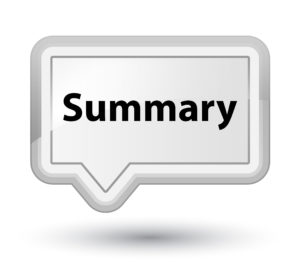
I believe LIFE INSURANCE needs to be the “solid” piece of a financial portfolio for a lifetime.
PERMANENT LIFE INSURANCE CONTRACTS ARE HIGHLY COMPLEX FINANCIAL VEHICLES THAT SPAN A LONG PERIOD OF TIME.
YOU NEED TO HAVE A PROPER UNDERSTANDING OF THE MOVING PARTS IN ALL PERMANENT LIFE INSURANCE AND WHAT IMPACT WILL THESE MOVING PARTS HAVE ON THE PREMIUM OR POLICY PERFORMANCE GOING FORWARD INTO THE FUTURE? YOU HAVE TO PAY ATTENTION TO THE ANNUAL STATEMENT AND REQUEST IN-FORCE ILLUSTRATIONS OFTEN. WHO WANTS TO THROW LOTS OF MONEY AT AN INSURANCE PRODUCT THAT FALLS APART MANY YEARS INTO THE FUTURE?
Life insurance decisions are important decisions that will be lived forward and understood backward.
IS THERE ONE RIGHT LIFE INSURANCE PRODUCT? NO! SOME JUST WORK BETTER OVER AN ENTIRE LIFETIME THAN OTHERS.
I say this having been in the insurance business for many years and seen every type of universal life insurance product introduced into the marketplace since the 1980s. I have experienced how companies create the buzz and promote them in very impressive ways.

ILLUSTRATIONS VERSES REALITY
I have seen illustrated products look better than they actually performed in reality? How current assumptions and projected level premiums even when included with no-lapse premium features for a period of time, changed over the years?
Other types of permanent life insurance policies credit cash values based on current interest rates, indexes or the outside performance of investment accounts, which are subject to change and not guaranteed unless specifically stated. You assume the risk for performance, not the company.
I have come to appreciate guarantees, even more, when I see what the insurance company can do to change your premium going forward. They have the discretion of making internal changes, many years into the future to current assumptions within their legal rights, which will only benefit them and their bottom line. Not you, your premium or policy.
It seems the more things can move and change, the more they will work against you especially if you can’t control what moves and changes.
THIS DOESN’T WORK FOR ME ANYMORE, AND IN MY OPINION, THIS IS WHY NOTHING BEATS A GUARANTEED PREMIUM.
Guarantees are guarantees. Projections are projections. Current assumptions are just that an assumption, which means they can change, and if they change, who will they benefit? The insurance company, not you!
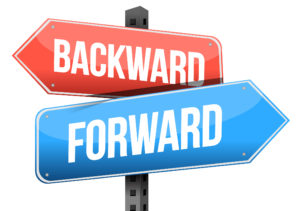
My beliefs have been shaped looking BACKWARD and FORWARD on why I like contractually guaranteed premiums and why they benefit you.
Guaranteed premiums provide comfort and safety for a lifetime.
PAY THE COMPANY TO DO WHAT THEY DO BEST AND THAT IS MANAGE RISK WITH POLICIES THAT PROVIDE GUARANTEES RATHER THAN PAYING THEM AND ASSUMING ALL OF THE RISK OF PERFORMANCE WITH NEWER AND TRENDIER TYPES OF LIFE INSURANCE PRODUCTS.
I MIGHT CHANGE MY OPINION WHEN THESE OTHER TYPES OF PRODUCTS HAVE BEEN AROUND FOR 100 YEARS AND HAVE A PROVEN TRACK RECORD LIKE WHOLE LIFE INSURANCE.

When you sit down and bet, gamble and guess at the life insurance casino. Remember Whole Life insurance and Guaranteed Universal Life insurance manage the longevity risk better with contractually guaranteed premiums and offer you the best chance of winning at the life insurance casino.

